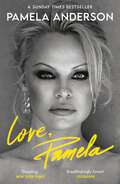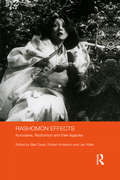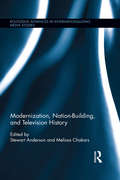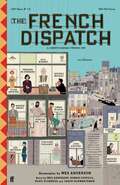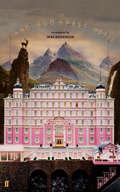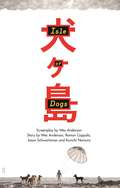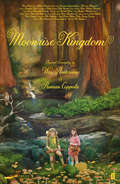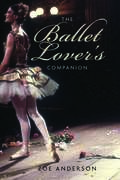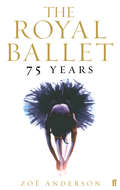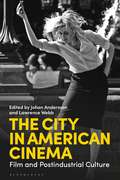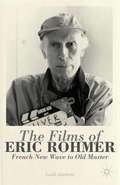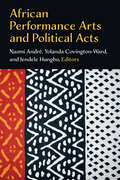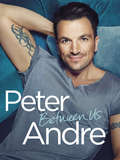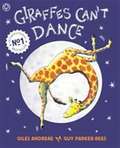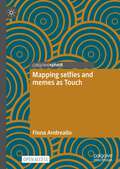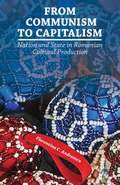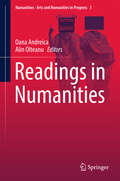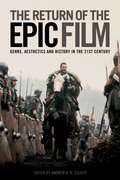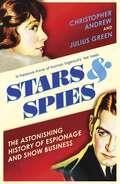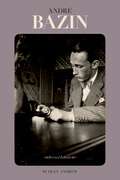- Table View
- List View
Love, Pamela
by Pamela Anderson'The iconic Anderson uses a mixture of poetry and prose to present an impressionistic view of a fascinating life.'-BOOKLIST, *starred* In this honest, layered and unforgettable book that alternates between storytelling and her own poetry, Pamela Anderson breaks the mould of the celebrity memoir while taking back the tale that has been crafted about her.Her blond bombshell image was ubiquitous in the 1990s. Discovered in the stands of a football game, she was immediately rocket launched into fame, becoming Playboy's favourite cover girl and an emblem of Hollywood glamour and sexuality. But what happens when you lose grip on your own life-and the image the notoriety machine creates for you is not who you really are?Growing up on Vancouver Island, the daughter of young, wild, and unprepared parents, Pamela Anderson's childhood was not easy, but it allowed her to create her own world-surrounded by nature and imaginary friends. When she overcame her deep shyness and grew into herself, she fell into a life on the cover of magazines, the beaches of Malibu, the sets of movies and talk shows, the arms of rockstars, the coveted scene at the Playboy Mansion. And as her star rose, she found herself tabloid fodder, at the height of an era when paparazzi tactics were bent on capturing a celebrity's most intimate, and sometimes weakest moments. This is when Pamela Anderson lost control of her own narrative, hurt by the media and fearful of the public's perception of who she was . . . and who she wasn't.Fighting back with a sense of grace, fuelled by a love of art and literature, and driven by a devotion to her children and the causes she cares about most, Pamela Anderson has now gone back to the island where she grew up, after a memorable run starring as Roxie in Chicago on Broadway, reclaiming her free spirit but also standing firm as a strong, creative, confident woman.
Rashomon Effects: Kurosawa, Rashomon and their legacies (Routledge Advances in Film Studies)
by Robert Anderson Blair Davis Jan WallsAkira Kurosawa is widely known as the director who opened up Japanese film to Western audiences, and following his death in 1998, a process of reflection has begun about his life’s work as a whole and its legacy to cinema. Kurosawa’s 1950 film Rashomon has become one of the best-known Japanese films ever made, and continues to be discussed and imitated more than 60 years after its first screening. This book examines the cultural and aesthetic impacts of Akira Kurosawa’s Rashomon, as well as the director’s larger legacies to cinema, its global audiences and beyond. It demonstrates that these legacies are manifold: not only cinematic and artistic, but also cultural and cognitive. The book moves from an examination of one filmmaker and his immediate social context in Japan, and goes on to explore how an artist’s ideas might transcend their cultural origins to ultimately provide global influences. Discussing how Rashomon’s effects began to multiply with the film being re-imagined and repurposed in numerous media forms in the decades that followed its initial release, the book also shows that the film and its ideas have been applied to a wider range of social and cultural phenomena in a variety of institutional contexts. It addresses issues beyond the realm of Rashomon within film studies, extending to the Rashomon effect, which itself has become a widely recognized English term referring to the significantly different interpretations of different eyewitnesses to the same dramatic event. As the first book on Rashomon since Donald Richie's 1987 anthology, it will be invaluable to students and scholars of film studies, film history, Japanese cinema and communication studies. It will also resonate more broadly with those interested in Japanese culture and society, anthropology and philosophy.
Rashomon Effects: Kurosawa, Rashomon and their legacies (Routledge Advances in Film Studies)
by Robert Anderson Blair Davis Jan WallsAkira Kurosawa is widely known as the director who opened up Japanese film to Western audiences, and following his death in 1998, a process of reflection has begun about his life’s work as a whole and its legacy to cinema. Kurosawa’s 1950 film Rashomon has become one of the best-known Japanese films ever made, and continues to be discussed and imitated more than 60 years after its first screening. This book examines the cultural and aesthetic impacts of Akira Kurosawa’s Rashomon, as well as the director’s larger legacies to cinema, its global audiences and beyond. It demonstrates that these legacies are manifold: not only cinematic and artistic, but also cultural and cognitive. The book moves from an examination of one filmmaker and his immediate social context in Japan, and goes on to explore how an artist’s ideas might transcend their cultural origins to ultimately provide global influences. Discussing how Rashomon’s effects began to multiply with the film being re-imagined and repurposed in numerous media forms in the decades that followed its initial release, the book also shows that the film and its ideas have been applied to a wider range of social and cultural phenomena in a variety of institutional contexts. It addresses issues beyond the realm of Rashomon within film studies, extending to the Rashomon effect, which itself has become a widely recognized English term referring to the significantly different interpretations of different eyewitnesses to the same dramatic event. As the first book on Rashomon since Donald Richie's 1987 anthology, it will be invaluable to students and scholars of film studies, film history, Japanese cinema and communication studies. It will also resonate more broadly with those interested in Japanese culture and society, anthropology and philosophy.
Modernization, Nation-Building, and Television History (Routledge Advances in Internationalizing Media Studies)
by Stewart Anderson Melissa ChakarsThis innovative collection investigates the ways in which television programs around the world have highlighted modernization and encouraged nation-building. It is an attempt to catalogue and better understand the contours of this phenomenon, which took place as television developed and expanded in different parts of the world between the 1950s and the 1990s. From popular science and adult education shows to news magazines and television plays, few themes so thoroughly penetrated the small screen for so many years as modernization, with television producers and state authorities using television programs to bolster modernization efforts. Contributors analyze the hallmarks of these media efforts: nation-building, consumerism and consumer culture, the education and integration of citizens, and the glorification of the nation’s technological achievements.
Modernization, Nation-Building, and Television History (Routledge Advances in Internationalizing Media Studies)
by Stewart Anderson Melissa ChakarsThis innovative collection investigates the ways in which television programs around the world have highlighted modernization and encouraged nation-building. It is an attempt to catalogue and better understand the contours of this phenomenon, which took place as television developed and expanded in different parts of the world between the 1950s and the 1990s. From popular science and adult education shows to news magazines and television plays, few themes so thoroughly penetrated the small screen for so many years as modernization, with television producers and state authorities using television programs to bolster modernization efforts. Contributors analyze the hallmarks of these media efforts: nation-building, consumerism and consumer culture, the education and integration of citizens, and the glorification of the nation’s technological achievements.
The French Dispatch
by Wes AndersonTHE FRENCH DISPATCH brings to life a collection of stories from the final issue of an American magazine published in a fictional 20th-century French city. It stars Bill Murray, Benicio del Toro, Adrien Brody, Tilda Swinton, Léa Seydoux, Frances McDormand, Timothée Chalamet, Lyna Khoudri, Jeffrey Wright, Mathieu Amalric, Stephen Park, and Owen Wilson.
The Grand Budapest Hotel: The Illustrated Screenplay (The\wes Anderson Collection)
by Wes AndersonThe Grand Budapest Hotel recounts the adventures of Gustave H (Ralph Fiennes), a legendary concierge at a famous European hotel between the wars, and Zero Moustafa (Tony Revolori), the lobby boy who becomes his most trusted friend. Acting as a kind of father-figure, M. Gustave leads the resourceful Zero on a journey that involves the theft and recovery of a priceless Renaissance painting; the battle for an enormous family fortune; a desperate chase on motorcycles, trains, sledges and skis; and the sweetest confection of a love affair - all against the back-drop of a suddenly and dramatically changing Continent.Inspired by the writings of Stefan Zweig, The Grand Budapest Hotel recreates a by-gone era through its arresting visuals and sparkling dialogue. The charm and vibrant colours of the film gradually darken with a sense of melancholy as the forces of history conspire against a vanishing world.
Isle of Dogs (The\wes Anderson Collection)
by Wes AndersonWes Anderson startled audiences with his stop-motion animated film of Roald Dahl's Fantastic Mr Fox.He now displays his unique wit and playful visual sense in an action-filled saga of Samurai dogs.
Moonrise Kingdom
by Wes AndersonMoonrise Kingdom is set in 1965 on an island off the coast of New England.It's the end of the summer and the seasonal hurricanes loom on the horizon.Set against this background is a romance between two twelve-year-olds: Lucy Bishop, (who lives on the island with her parents [Bill Murray and Frances McDormand] and three younger brothers) and Sam (an orphan who is camping on the island with the Khaki Scout troop).Lucy and Sam hatch a secret plan to run away, and undertake a perilous journey though the woods and across the streams that criss-cross the island, to an isolated cove, where they set up their kingdom. They are pursued by the local sheriff (Bruce Willis) and the scout troop leader Scout Master Ward (Edward Norton).The follies of youth are matched by the compromises of age, and as the conflict between the generations escalates, the hurricane breaks upon the island putting all the characters at risk...
The Ballet Lover's Companion
by Zoe AndersonThis engaging book is a welcome guide to the most successful and loved ballets seen on the stage today. Dance writer and critic Zoe Anderson focuses on 140 ballets, a core international repertory that encompasses works from the ethereal world of romantic ballet to the edgy, muscular works of modern choreographers. She provides a wealth of facts and insights, including information familiar only to dance world insiders, and considers such recent works as Alexei Ramansky's Shostakovich Trilogy and Christopher Wheeldon's The Winter's Tale as well as older ballets once forgotten but now returned to the repertory, such as Sylvia. To enhance enjoyment of each ballet, Anderson also offers tips on what to look for during a performance. Each chapter introduces a period of ballet history and provides an overview of innovations and advancement in the art form. In the individual entries that follow, Anderson includes essential facts about each ballet’s themes, plot, composers, choreographers, dance style, and music. The author also addresses the circumstances of each ballet’s creation and its effect in the theater, and she recounts anecdotes that illuminate performance history and reception. Reliable, accessible, and fully up to date, this book will delight anyone who attends the ballet, participates in ballet, or simply loves ballet and wants to know much more about it.
The Royal Ballet: 75 Years
by Zoë AndersonThis book is a perceptive and critical account of the first 75 years of The Royal Ballet, tracing the company's growth, and its great cultural importance - an indispensable book for all lovers of ballet.In 1931, Ninette de Valois started a ballet company with just six dancers. Within twenty years, The Royal Ballet - as it became - was established as one of the world's great companies. It has produced celebrated dancers, from Margot Fonteyn to Darcey Bussell, and one of the richest repertoires in ballet.The company danced through the Blitz, won an international reputation in a single New York performance and added to the glamour of London's Swinging Sixties. It has established a distinctive English school of ballet, a pure classical style that could do justice to the 19th-century repertory and to new British classics.Leading dance critic, Zoë Anderson, vividly portrays the extraordinary personalities who created the company and the dancers who made such an impact on their audiences. She looks at the bad times as well as the good, examining the controversial directorships of Norman Morrice and Ross Stretton and the criticism fired at the company as the Royal Opera House closed for redevelopment.
The City in American Cinema: Film and Postindustrial Culture (International Library of the Moving Image)
by Johan Andersson Lawrence WebbHow has American cinema engaged with the rapid transformation of American cities and urban culture since the 1960s? And what role have films and film industries played in shaping and mediating cultural and economic change in the 'postindustrial' city? This interdisciplinary collection argues that cinema and cities have become increasingly intertwined in the era of urban branding, cultural industries, and 'creative cities'. Spanning four decades of US urban history, from decline and crisis in the 1970s and 1980s to neoliberal restructuring, galloping globalization and accelerated gentrification in the 1990s and beyond, the book considers the complex, evolving relationship between moving image cultures and the urban environment in key cinematic cities such as New York, Los Angeles, Boston and Detroit. Across twelve chapters, the contributors address these questions via textual and industrial perspectives, analyzing questions of narrative, aesthetics, and genre as well as contexts of production, exhibition and reception. Drawing together critical concepts from film and urban studies, the chapters view contemporary cinema through the political and social geographies of class, race, gender, and sexuality. From Hollywood blockbusters to independent cinema, romantic comedy to science fiction, key films discussed include Frances Ha, Fruitvale Station, Desperately Seeking Susan, The King of New York, Inception, Doctor Strange, Only Lovers Left Alive and The Friends of Eddie Coyle.
The City in American Cinema: Film and Postindustrial Culture (International Library of the Moving Image)
by Johan Andersson Lawrence WebbHow has American cinema engaged with the rapid transformation of American cities and urban culture since the 1960s? And what role have films and film industries played in shaping and mediating cultural and economic change in the 'postindustrial' city? This interdisciplinary collection argues that cinema and cities have become increasingly intertwined in the era of urban branding, cultural industries, and 'creative cities'. Spanning four decades of US urban history, from decline and crisis in the 1970s and 1980s to neoliberal restructuring, galloping globalization and accelerated gentrification in the 1990s and beyond, the book considers the complex, evolving relationship between moving image cultures and the urban environment in key cinematic cities such as New York, Los Angeles, Boston and Detroit. Across twelve chapters, the contributors address these questions via textual and industrial perspectives, analyzing questions of narrative, aesthetics, and genre as well as contexts of production, exhibition and reception. Drawing together critical concepts from film and urban studies, the chapters view contemporary cinema through the political and social geographies of class, race, gender, and sexuality. From Hollywood blockbusters to independent cinema, romantic comedy to science fiction, key films discussed include Frances Ha, Fruitvale Station, Desperately Seeking Susan, The King of New York, Inception, Doctor Strange, Only Lovers Left Alive and The Friends of Eddie Coyle.
The Films of Eric Rohmer: French New Wave to Old Master
by Leah AnderstEric Rohmer was a key figure in French New Wave cinema. Contributors to this volume revisit, complicate, and upend accepted readings and interpretations of perennial Rohmerian topics including the important role of language in his films, the influence of the arts, depictions of gender and class, and the roles played by space and place in his films.
Wie kommt Tanz ins Museum?: Zur Tanzkunst im Ausstellungskontext bei Xavier Le Roy, Anne Teresa De Keersmaeker und Boris Charmatz (TanzScripte #67)
by Katharina de Andrade RuizTanz gewinnt aktuell an Relevanz im Ausstellungskontext. Tänzer*innen bewegen sich durch originär für Kunstobjekte geschaffene Säle, Choreograf*innen bespielen Museen und werden zu Ausstellungsgestalter*innen. Mit Blick auf das Beziehungsgeflecht von Tanz, bildender Kunst, Museum und Ausstellung von Beginn des 20. Jahrhunderts bis zur Gegenwart zeigt Katharina de Andrade Ruiz auf, wie die Tanzkunst in den Ausstellungskontext gelangt. Im Fokus ihrer Analyse stehen choreografische Arbeiten von Xavier Le Roy, Anne Teresa De Keersmaeker sowie Boris Charmatz, die als Beispiele für Live-Tanz-Ausstellungen, Fusionen von zeitgenössischer Tanzkunst und dem Präsentationsformat Ausstellung dienen.
African Performance Arts and Political Acts (African Perspectives)
by Naomi Andre Yolanda Covington-Ward Jendele HungboAfrican Performance Arts and Political Actspresents innovative formulations for how African performance and the arts shape the narratives of cultural history and politics. This collection, edited by Naomi André, Yolanda Covington-Ward, and Jendele Hungbo, engages with a breadth of African countries and art forms, bringing together speech, hip hop, religious healing and gesture, theater and social justice, opera, radio announcements, protest songs, and migrant workers’ dances. The spaces include village communities, city landscapes, prisons, urban hostels, Township theaters, opera houses, and broadcasts through the airwaves on television and radio as well as in cyberspace. Essays focus on case studies from Cameroon, the Democratic Republic of the Congo, Nigeria, Senegal, South Africa, and Tanzania.
Peter Andre - Between Us
by Peter AndreWith his easy charm, down-to-earth personality and natural good looks, it's no wonder that Peter Andre has legions of fans across the globe. Whilst once best known for producing chart-topping pop songs, selling millions of records worldwide and performing sell-out venues all over the world, in recent years he has shown himself to be a man of diverse talents. From presenting television shows to mastering ballroom dancing on Strictly Come Dancing; from launching a successful coffee shop business to the work he does for charities close to his heart.In this warm and intimate book, Peter invites you to take a look behind the scenes of his incredible life. He'll talk about the highs and lows he has experienced: how he met and fell in love with his wife, Emily; his joy at the arrival of his daughter Amelia; the laughs and fun he has with his two older children, Junior and Princess and how his music has evolved to reflect a new period in his life. He'll also touch on the worst time of his life, when he lost his brother, Andrew, to cancer, the unbreakable bond he has with his family and what the future holds for him.Packed with gorgeous colour photographs - many of them never seen before - this is a unique and very personal insight into the world of one of our best-loved celebrities.
Giraffes Can't Dance (Orchard Picturebooks)
by Giles Andreae Guy Parker-ReesNumber One bestseller Giraffes Can't Dance from author Giles Andreae has been delighting children for over 15 years. Gerald the tall giraffe would love to join in with the other animals at the Jungle Dance, but everyone knows that giraffes can't dance . . . or can they? A funny, touching and triumphant picture book story about a giraffe who finds his own tune and confidence too, with joyful illustrations from Guy Parker Rees and a foiled cover.
Mapping selfies and memes as Touch
by Fiona AndrealloThis open access book offers a rich and nuanced analysis of digitally networked socialities as culturally meaningful relationships of Touch. Focusing on the ways Touch is practised in everyday social interactions serves as a basis for how Touch is understood as multiply significant – physically, emotionally, intellectually and politically. Andreallo initiates a map of the fundamentals of Touch and how they can be considered for future research in considering digitally networked cultures. This map also serves as a basis for closely examining selfies and memes. Examining social networks of Touch, Andreallo focuses on a specific example of the PrettyGirlsUglyFaces meme and ugly selfies(uglies). Through this example, memes and selfies are mapped as Touch involving textures of both intimacy and violence. Andreallo also discusses technological seamlessness and cultural semefulness as conversations of social relationships of Touch, and proposes the term semeful sociabilities to describe how the everyday technological self engages in practices of Touch. This book is a compact, approachable insight into selfies and memes as everyday culturally networked Touch relationships that also offers a way forward in recognising technological relationships as culturally meaningful.
From Communism to Capitalism: Nation and State in Romanian Cultural Production
by F. AndreescuThis book offers an interdisciplinary mode of analyzing transitions from communism and planned economy to democracy and capitalism focusing on how the various social and political transformations are reflected within one hundred Romanian films produced during communism, transition, and post-transition.
Readings in Numanities (Numanities - Arts and Humanities in Progress #3)
by Oana Andreica Alin OlteanuThis unique book gathers articles from the numanistic perspective of multidisciplinarity and innovation, connected by three main theoretical interests or overarching themes: music, semiotics and translation. Offering an eclectic collection of innovative papers that address such topics as culture, musicology, art consumption, meaning, codes and national identities, to name a few, it has a broad appeal across the humanities and social sciences. The contributing authors draw on various schools and methodologies, including psychology, psychoanalysis, social semiotics, semiotic modelling, deconstruction and cultural analysis. By approaching established themes in new and challenging ways, this highly engaging book has the potential to advance the state of the art in various topics. It appeals to all scholars investigating cultural identity, linguistics and translation, music consumption, performance, semiotic theories and various intersections of these and related topics.
The Return of the Epic Film: Genre, Aesthetics and History in the 21st Century (PDF)
by Andrew B.R. ElliotThe Return of the Epic Film offers a fresh way of thinking about a body of films which has dominated our screens for a decade. With contributions from top scholars in the field, the collection adopts a range of interdisciplinary perspectives to explore the epic film in the twenty-first century.
Stars and Spies: The story of Intelligence Operations…
by Christopher Andrew Julius GreenA vastly entertaining and unique history of spying and showbiz, from the Elizabethan age to the Cold War and beyond. Throughout history, there has been a lively crossover between show business and espionage. While one relies on publicity and the other on secrecy both require high levels of creative thinking, improvisation, disguise and role-play. This crossover has produced some of the most extraordinary undercover agents and, occasionally, disastrous and dangerous failures. Stars and Spies is the first history of the interplay between the two worlds, written by two experts in their fields. We travel back to the golden age of theatre and intelligence in the reign of Elizabeth I and onwards into the Restoration. We visit Civil War America, Tsarist Russia and fin de siècle Paris where some writers, actors and entertainers become vital agents, while others are put under surveillance. And as the story moves through the twentieth century and beyond, showbiz provides essential cover for agents to gather information while hiding in plain sight. At the same time, spying enters mainstream popular culture, in books, film and on TV.Starring an astonishing cast including Christopher Marlowe, Aphra Behn, Voltaire, Mata Hari, Harpo Marx, Somerset Maugham, Graham Greene, Noel Coward, Alexander Korda, John le Carré and many others, Stars and Spies is a highly enjoyable examination of the fascinating links between the intelligence services and show business.
André Bazin
by Dudley AndrewAndré Bazin, often dubbed the father of the French New Wave, has had an immense impact on film art. He is credited with almost single-handedly establishing the study of film as an accepted intellectual pursuit. The journal that he founded in 1951, Cahiers du Cinéma, remains the most influential archive of cinema criticism. He remains one of the most read, most studied, and most engaging figures ever to have written about film. The last few years have witnessed a massive resurgence of interest in Bazin among critics, scholars, and students of every persuasion. His writings, a mainstay of film theory courses, are now finding a place on the syllabi of core courses in film history, criticism, and appreciation. Andrew's intellectual biography is a landmark in film scholarship.
André Bazin
by Dudley AndrewAndré Bazin, often dubbed the father of the French New Wave, has had an immense impact on film art. He is credited with almost single-handedly establishing the study of film as an accepted intellectual pursuit. The journal that he founded in 1951, Cahiers du Cinéma, remains the most influential archive of cinema criticism. He remains one of the most read, most studied, and most engaging figures ever to have written about film. The last few years have witnessed a massive resurgence of interest in Bazin among critics, scholars, and students of every persuasion. His writings, a mainstay of film theory courses, are now finding a place on the syllabi of core courses in film history, criticism, and appreciation. Andrew's intellectual biography is a landmark in film scholarship.
